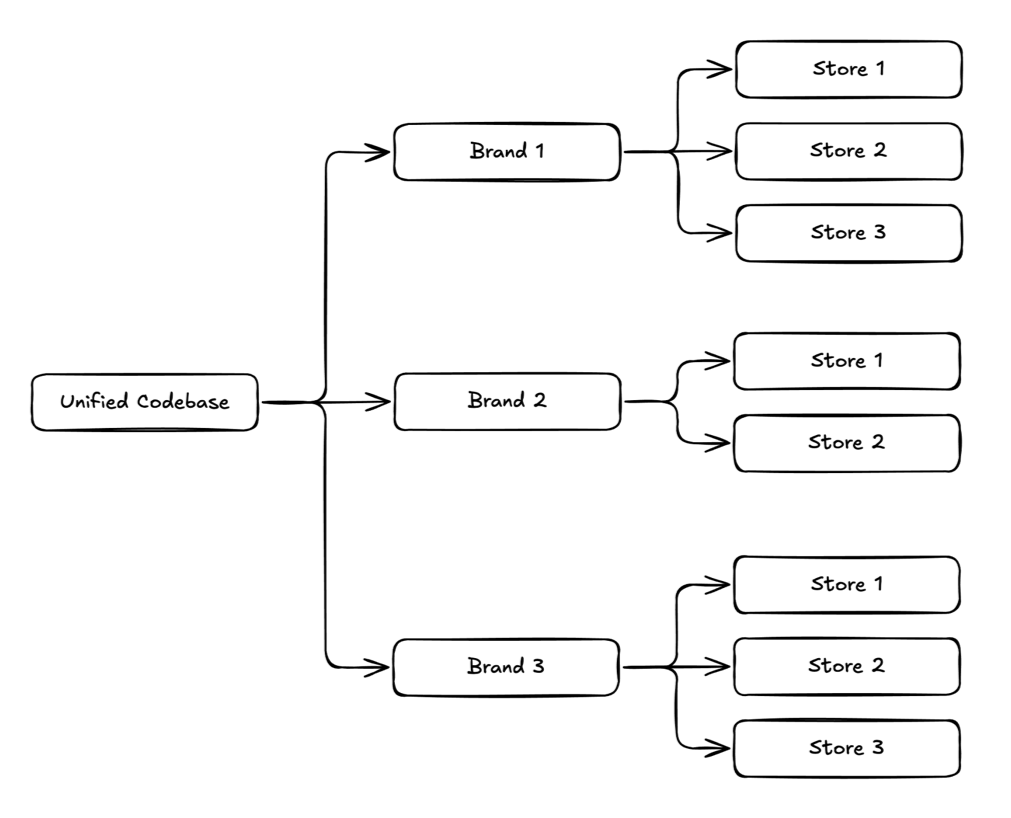Navigating Tariffs as an Ecommerce Retailer or Brand Selling Into the US
Join us as we consider the impact of the new and proposed US tariffs on international ecommerce retailers. We explore a variety of ways to mitigate risk for those selling into the US, along with advice for brands using this as an opportunity to consolidate stateside commerce.
Written By
Hannah Smiddy

For ecommerce brands selling into the US, proposed tariffs are reshaping the international retail landscape, leaving a trail of uncertainty in their wake. The situation is volatile, with the threat of higher tariffs causing significant concern.
In this article, we explore what the new tariffs mean for retailers with a US customer base, as well as how brands can look to mitigate risks and potentially even turn this challenging period into a time of growth.
This article is based on discussions we are having amongst our team, as well as those with our clients, technology vendor partners and industry consultants. The information included is accurate as at 29th April 2025.
New US tariffs & policy changes explained
The US government has announced significant shifts to US trade policy, with two critical changes taking centre stage.
10% tariffs on goods entering the US
As of 5th April 2025, companies importing foreign goods into the US have to pay a 10% tax to the US government, regardless of country of origin. They may choose to pass some or all of this import duty onto customers.
Duty free rule scrapped
Historically, the de minimis exemption in the US has meant that goods valued under $800 can enter the country duty-free and with minimal inspection. This has allowed US consumers to purchase goods from overseas without facing high import costs.
Effective as of 2nd May 2025, this trade rule is being eliminated for Chinese and Hong Kong exports. This means that every US order from these locations now faces duty or postal fees, along with formal customs entry. The duty amount is currently set at 120% of the value of the item.
Later in 2025, de minimis exemptions are expected to be suspended for all countries.
What is the impact on ecommerce?
These changes have introduced significant uncertainty for ecommerce retailers selling into the US, many of whom are now grappling with unpredictable shifts in supply chain costs, profit margins and consumer demand.
US cross-border ecommerce will become more expensive, with immediate financial challenges for many brands. Landed costs are set to increase, which will compress margins and force brands to revaluate their pricing.
Customs clearance also promises to become more complex thanks to the de minimis suspension, adding increased risk around compliance for retailers.
The inability to confidently forecast the financial impact will also make strategic planning more difficult.
For US consumers buying from foreign brands, the impact will be seen in higher product price tags and longer fulfilment timelines.
How are retailers responding?
There’s no one-size-fits-all response. Retailers must consider their specific circumstances – including industry, supplier relationships and customer base – to shape the most suitable path forward. Swanky partners with specialist cross-border experts such as Global-e and Reach who are able to provide bespoke consultancy and technology enablement across the cross-border retail journey.
Many retailers will now be re-evaluating their international expansion priorities. For some, these additional costs mean that the US market may no longer represent the growth opportunity it once did. As a result, they are choosing to pivot from the US and focus their efforts and resources towards potentially more lucrative regions.
Others may use this as an opportunity to double down on cross-border commerce in the US – streamlining fulfilment, implementing compliance strategies, and prioritising the customer experience.
However you choose to respond, it’s the brands who move decisively that will gain the advantage in the long run. Policy is changing quickly, and brands that are unable to adapt quickly will be significantly disadvantaged.
If you’re on a legacy platform for example, and meaningful frontend changes take weeks or even months to implement, you’re going to struggle in the current environment. Several of our prospective clients have accelerated their replatforming timetables because they recognise that moving to a platform like Shopify will enable them to remain agile.
In terms of marketing, many brands are likely to see their advertising funds slashed, putting teams under pressure to continue driving demand with less budget. As marketers look to get more return from their ad spend, we expect to see retailers increasingly investing in conversion rate optimisation in response – identifying opportunities for on-site improvements that will increase the number of visitors converting.
We also predict a shift in focus to organic channels, with brands looking to increase visibility and capture organic demand.
Turning challenge into opportunity
For brands serious about their US presence, this challenging time could represent an opportunity to consolidate your offering and build loyalty amongst stateside customers.
Here are some considerations if you’re looking to double down on sales into the US.
Transparency is key
Rather than remaining silent, be open and honest about any changes to your costs or delivery timelines as a result of the tariffs. Customers will appreciate being kept in the loop, helping you build positive long-term relationships. Failure to be upfront about what’s happening risks frustrating your customers and driving them to purchase elsewhere.
Consider communicating information with customers via email and across any relevant social channels, as well as via dynamic location-based messaging on your website. Even better, A/B test different messaging and checkout experiences to identify what resonates most with your audience.
Localise your site for US consumers
It’s important to adapt your ecommerce store and overall customer experience for American consumers. This is more than just tweaking spellings and changing currency – it’s about aligning with expectations, regulations and shopping habits to build trust and drive conversions.
In terms of the tariffs and customs changes, you want to avoid leaving US shoppers with any nasty surprises once they’ve checked out. Be sure to display accurate pricing and delivery information, factoring in all duties and fees, and ensuring that your checkout experience (including shipping orchestration) is clear and accurate for each customer.
You might also want to localise your site by adapting your FAQs and blog content, providing helpful information for customers in the US.
Improve your post-purchase communication
Keep customers informed at each stage of the post-purchase process, including order confirmations, dispatch notifications and estimated arrival dates. If there’s a delay at any point, let them know and provide as much information as possible.
Invest in exceptional customer service
How you respond to confused and frustrated customers can help to boost consumer confidence, build long-term loyalty and reduce churn. Fast, empathetic and honest customer support – across all channels – can be a major differentiator, especially when consumers are paying more.
If your data shows a rise in ticket volume as a result of tariff-related changes, consider the role that automation and AI can have in streamlining customer service, minimising manual admin and driving shopper satisfaction.
We typically recommend Gorgias, a leading conversational AI platform for ecommerce retailers, when consulting on tech stack requirements for our clients. With Gorgias’ smart macros, brands can create a library of pre-made responses to common questions about tariffs, eliminating repetition from their workflows whilst ensuring fast, consistent replies.
Consider US fulfilment
Although requiring a large upfront cost, a fulfilment centre in the US could help enhance delivery speed, offset import duties and help preserve competitiveness.
Alternatively, consider using a US-based 3PL to sort fulfilment for you. A modern iPaaS (Integration Platform as a Service) like Patchworks can reduce time-to-value when introducing changes to your tech stack. Swanky is a certified Patchworks Delivery Partner, with an in-house team experienced in building seamless integrations for Shopify retailers.
Make the most of US brand advocates
To help build trust amongst shoppers in the US, leverage user-generated content of US-based brand advocates across social media. This form of social proof will give them a reason to feel confident in your brand.
Lean into the value you can provide
Across your ecommerce site and marketing channels, focus on what sets your brand apart, emphasising the quality and uniqueness of your product. Why should consumers pay more for your product? What value does it provide? How will it enhance their life?
Work with a Merchant of Record
A Merchant of Record (MoR) acts as a legal entity for selling products to a customer and adhering to any local regulations. Global-e and Reach are two examples of platforms providing this service. They manage the complexities of selling to other countries on your behalf, including duties, import tax and customs documentation.
Working with a MoR takes away stressful compliance issues for brands, accelerating cross-border expansion and supporting growth. Our clients have been particularly well supported by Global-e and Reach’s regular updates as the tariffs landscape has continued to evolve.
Nurture retention amongst existing US shoppers
Making the most out of customers you’ve already acquired in the US could be a particularly effective strategy for driving growth during this uncertain period.
Personalisation is a key strategy for fostering loyalty amongst your existing US customer base. Leverage data to curate their experience, using what you know about shoppers and their past purchases to tailor the customer journey (such as recommending products that you know they’ll love and sharing content that adds value to their experience).
You can read about other retention strategies on our blog, but some examples include:
- building a loyal brand community with a tiered membership program;
- gamifying your brand experience to improve engagement and encourage repeat purchases;
- hosting VIP virtual events – nurturing lasting relationships with loyal customers;
- using email flows to surprise and delight customers; and
- asking for (and acting on) customer feedback.
How Swanky can support cross-border commerce
Swanky delivers customised ecommerce solutions for global growth. We design, build and implement international Shopify Plus setups tailored to each business, balancing user experience, SEO and operational needs. We also have a dedicated Growth Accelerator team with proven expertise in international marketing.
To address increasing costs and enhance localised shopping experiences for US consumers, we are talking to several brands about the creation of US expansion stores on Shopify Plus.
Our proprietary multi-store codebase solution enables efficient and reliable scalability of international stores, while reducing the time and costs involved with ongoing maintenance. It provides the flexibility to tailor unique customer experiences across multiple markets, while only needing to maintain a single, robust codebase.

To find out more about how we can help you navigate tariff uncertainty, contact our solutions team who will be happy to discuss our experience and services with you.

